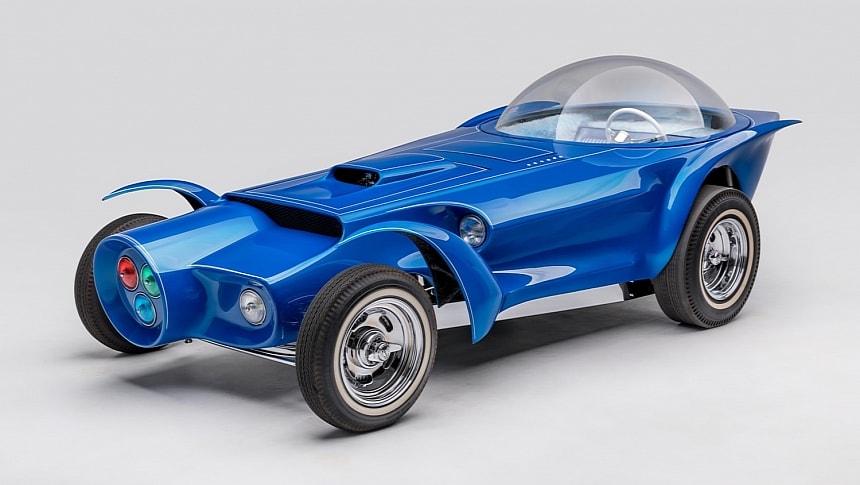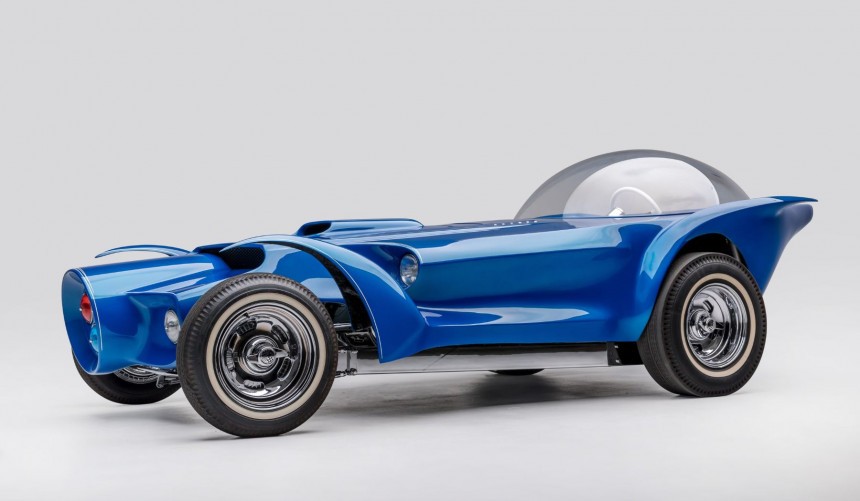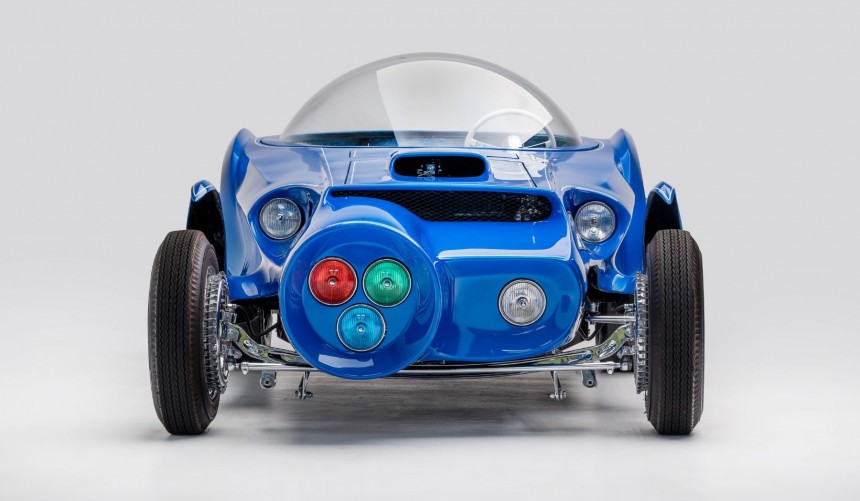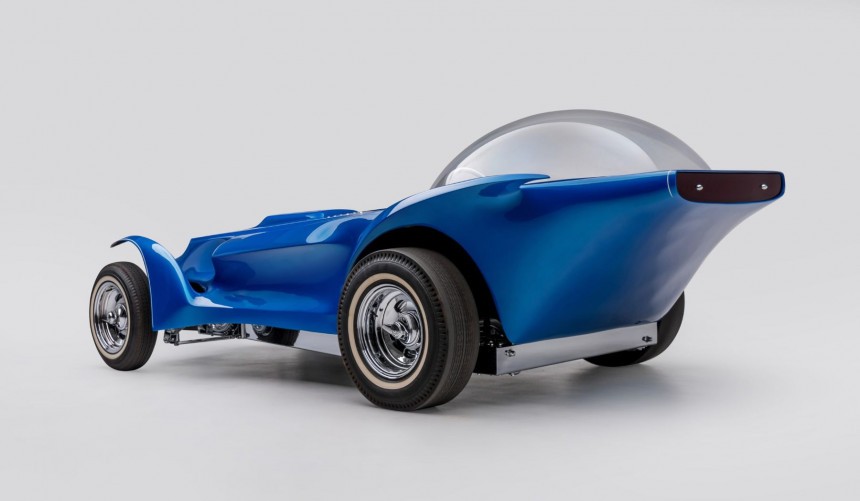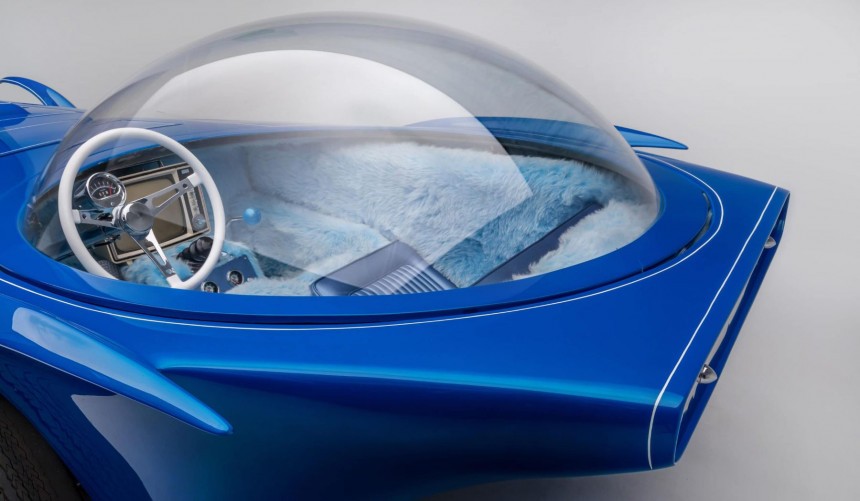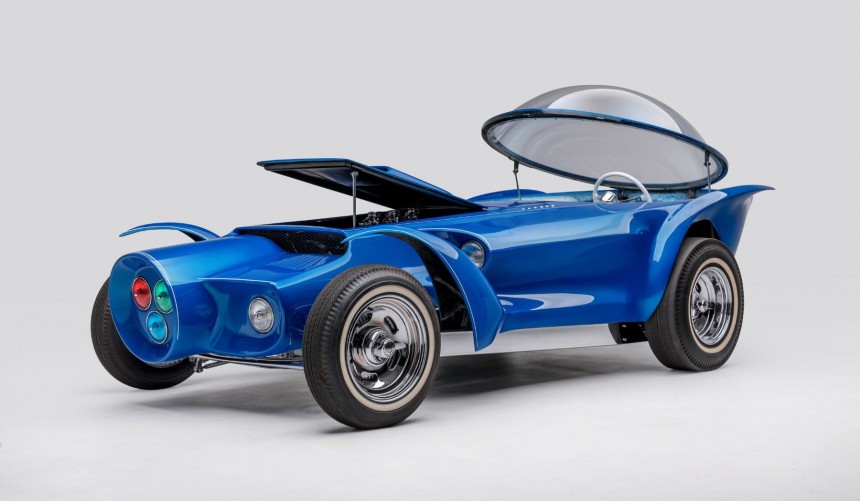Built six decades ago by the one-and-only Ed "Big Daddy" Roth, the Orbitron is a priceless work of custom car art that has been found and restored after seemingly vanishing for decades.
Born in Beverly Hills, California, in the spring of 1932, Ed Roth was an artist, cartoonist, illustrator, pinstriper, and custom car builder, but for many enthusiasts, he is known simply as the "Big Daddy" of Southern California's Kustom Kulture that exploded during the 1950s and 1960s.
Roth was passionate about cars from an early age. After studying engineering in college and briefly serving in the US Air Force, he began dedicating his time to the emerging Kustom Kulture.
As early as 1958, he began airbrushing so-called "Weirdo" T-shirts that featured his signature caricatures. Roth sold the T-shirts at car shows, then through Car Craft magazine, and by 1959, they had caused a full-blown craze.
The money he earned from selling T-shirts allowed Roth to finish his first famous kustom, the 1959 Owtlaw.
Though he continued creating popular caricatures like the legendary Rat Fink, the success of the Outlaw (originally dubbed Excaliber) enabled Roth to continue building fascinating show cars that made him one of the most esteemed custom car builders of all time.
By 1964, Roth had multiple big-money contracts with scale model manufacturers (most notably, Revell) and custom car promoters.
To keep the money flowing, he needed to come up with a new car, so he started work on a project named Orbitron.
Like his previous creations, the Outlaw, the Mysterion, the Rotar, or the Beatnik Bandit, the Orbitron was to combine traditional hot-rod techniques with Roth's signature flamboyant style.
Work advanced at an accelerated pace, with the bespoke frame being put together in just a few weeks.
About halfway into the build, Roth hired promising stylist Ed 'Newt' Newton and assigned him to the Orbitron project, challenging him to design his own variation of the body.
After drawing several sketches, Roth and Newton settled on the final design, which featured an asymmetrical nose.
The story goes that Big Daddy was fascinated by the technology behind the color TV, discovering that if red, blue, and green lights were mixed, it resulted in a white beam.
Therefore, he wanted the Orbitron to feature tri-color headlights but got the idea of fitting one next to a conventional one to emphasize that both resulted in the same-color beam, so the asymmetrical nose was born.
Apart from the asymmetrical front end, the one-off featured many jaw-dropping features.
A mix between a slingshot dragster and a futuristic show car taken from one of Motown's design studios, the Orbitron received a flamboyant interior that included furry light blue carpeting, a leather-upholstered bench seat and an 11-inch General Electric "1-Touch" portable TV mounted in the center console.
Everything was covered by a Plexiglas bubble top that could be opened and closed with a touch of a button, thanks to a custom electro-hydraulic system.
Underneath the flashy body stood a fully chromed custom chassis equipped with a dropped Ford front axle, a 1956 Chevrolet rear end, Buick drums, and early Ford calipers
Though the initial design featured an exposed engine, much like Roth's previous show cars, due to time constraints, the Orbitron ended up with a custom mid-1950s Chevy V8 equipped with a Stromberg 97 triple-carb setup.
Big Daddy was allegedly embarrassed that he couldn't come up with a more spectacular powerplant, so he decided to fabricate a hydraulically opening scooped engine cover.
Though the famed builder saw his latest creation as a failure because of this feature, the Orbitron still gathered large crowds at the auto shows it was featured in, becoming widely popular.
Despite the Orbitron's success on the show car circuit, Roth decided to part ways with his creation in 1967. Initially purchased by fellow car customizer Darryl Starbird, the one-off was subsequently sold to a Texas-based collector, and years later, it changed owners again, making its way across the border in Mexico.
These details remained unknown to all but a few people close to the aforementioned owners. For the wider audience who still remembered the famed custom, it seemed to have disappeared.
Many enthusiasts tried to track it down from the 1980s onwards but to no avail.
Fortunately, during the mid-2000s, famed restorer and rare car tracker Michael Lightbourn managed to get a promising tip that led him to Ciudad Juárez, in Chihuahua, Mexico.
There, in front of an adult bookstore, he found the bubble-top-less trash-filled Orbitron rusting away.
After a painstaking negotiation process with its owner, who, despite the deplorable state, was reluctant to part ways with the one-off, citing a sentimental value, Lightbourn managed to buy the car and bring it back to the US.
Subsequently, he sold the rusting, incomplete legend to Beau Boeckmann, the president of Galpin Auto Sports (G.A.S.) and a huge Ed Roth fan.
Boeckmann put together a team that included Ed Newton (original co-designer), Larry Watson (original painter), and Joe Perez (who initially upholstered the interior).
Following the original design, the team managed to restore the original components, faithfully recreate those that were missing, and even got a hold of an authentic General Electric "1-Touch" portable TV that still worked.
After months of arduous work, the Orbitron rose from its ashes, looking just like it did back in 1964.
It currently resides in the Galpin Premier Collection located in Van Nuys, California, where it can be admired alongside many jaw-dropping cars.
While its legendary builder saw it as a failure, the Orbitron is unquestionably one of the most famous kustoms of the 1960s. The fact that it was found, fully restored, and displayed in a collection that the public can visit is a beautiful way to honor the late Big Daddy Roth, who sadly passed away in 2001.
For a virtual tour of this iconic show car, we recommend watching the YouTube video below by STUPID CROWN.
Roth was passionate about cars from an early age. After studying engineering in college and briefly serving in the US Air Force, he began dedicating his time to the emerging Kustom Kulture.
As early as 1958, he began airbrushing so-called "Weirdo" T-shirts that featured his signature caricatures. Roth sold the T-shirts at car shows, then through Car Craft magazine, and by 1959, they had caused a full-blown craze.
The money he earned from selling T-shirts allowed Roth to finish his first famous kustom, the 1959 Owtlaw.
Though he continued creating popular caricatures like the legendary Rat Fink, the success of the Outlaw (originally dubbed Excaliber) enabled Roth to continue building fascinating show cars that made him one of the most esteemed custom car builders of all time.
The birth of the Orbitron
To keep the money flowing, he needed to come up with a new car, so he started work on a project named Orbitron.
Like his previous creations, the Outlaw, the Mysterion, the Rotar, or the Beatnik Bandit, the Orbitron was to combine traditional hot-rod techniques with Roth's signature flamboyant style.
Work advanced at an accelerated pace, with the bespoke frame being put together in just a few weeks.
About halfway into the build, Roth hired promising stylist Ed 'Newt' Newton and assigned him to the Orbitron project, challenging him to design his own variation of the body.
Going for an asymmetrical look
The story goes that Big Daddy was fascinated by the technology behind the color TV, discovering that if red, blue, and green lights were mixed, it resulted in a white beam.
Therefore, he wanted the Orbitron to feature tri-color headlights but got the idea of fitting one next to a conventional one to emphasize that both resulted in the same-color beam, so the asymmetrical nose was born.
Big Daddy saw it as a failure
A mix between a slingshot dragster and a futuristic show car taken from one of Motown's design studios, the Orbitron received a flamboyant interior that included furry light blue carpeting, a leather-upholstered bench seat and an 11-inch General Electric "1-Touch" portable TV mounted in the center console.
Everything was covered by a Plexiglas bubble top that could be opened and closed with a touch of a button, thanks to a custom electro-hydraulic system.
Underneath the flashy body stood a fully chromed custom chassis equipped with a dropped Ford front axle, a 1956 Chevrolet rear end, Buick drums, and early Ford calipers
Though the initial design featured an exposed engine, much like Roth's previous show cars, due to time constraints, the Orbitron ended up with a custom mid-1950s Chevy V8 equipped with a Stromberg 97 triple-carb setup.
Big Daddy was allegedly embarrassed that he couldn't come up with a more spectacular powerplant, so he decided to fabricate a hydraulically opening scooped engine cover.
Though the famed builder saw his latest creation as a failure because of this feature, the Orbitron still gathered large crowds at the auto shows it was featured in, becoming widely popular.
From legendary kustom to a trash can in front of an adult bookstore
These details remained unknown to all but a few people close to the aforementioned owners. For the wider audience who still remembered the famed custom, it seemed to have disappeared.
Many enthusiasts tried to track it down from the 1980s onwards but to no avail.
Fortunately, during the mid-2000s, famed restorer and rare car tracker Michael Lightbourn managed to get a promising tip that led him to Ciudad Juárez, in Chihuahua, Mexico.
There, in front of an adult bookstore, he found the bubble-top-less trash-filled Orbitron rusting away.
Brought back to the US and restored to its former glory
Subsequently, he sold the rusting, incomplete legend to Beau Boeckmann, the president of Galpin Auto Sports (G.A.S.) and a huge Ed Roth fan.
Boeckmann put together a team that included Ed Newton (original co-designer), Larry Watson (original painter), and Joe Perez (who initially upholstered the interior).
Following the original design, the team managed to restore the original components, faithfully recreate those that were missing, and even got a hold of an authentic General Electric "1-Touch" portable TV that still worked.
After months of arduous work, the Orbitron rose from its ashes, looking just like it did back in 1964.
It currently resides in the Galpin Premier Collection located in Van Nuys, California, where it can be admired alongside many jaw-dropping cars.
While its legendary builder saw it as a failure, the Orbitron is unquestionably one of the most famous kustoms of the 1960s. The fact that it was found, fully restored, and displayed in a collection that the public can visit is a beautiful way to honor the late Big Daddy Roth, who sadly passed away in 2001.
For a virtual tour of this iconic show car, we recommend watching the YouTube video below by STUPID CROWN.
